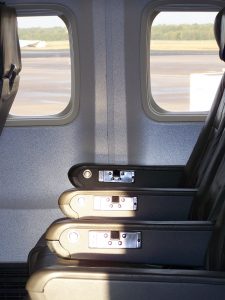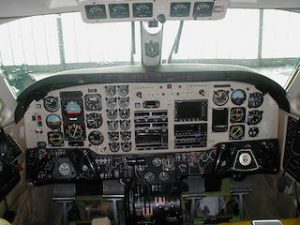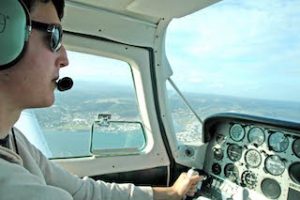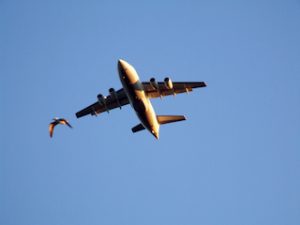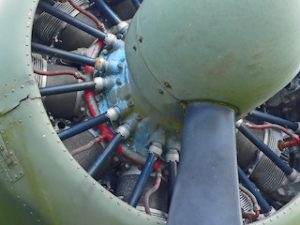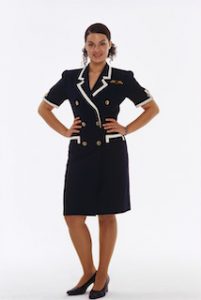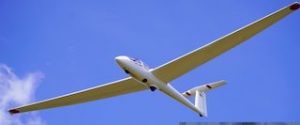Line-Oriented Flight Training (LOFT)
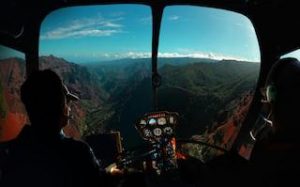 Line-Oriented Flight Training (LOFT) stands as a critical and culminating component in the Multi-Crew Cooperation (MCC) course for aspiring airline pilots. As aviation technology and air traffic grow increasingly complex, LOFT sessions offer an unparalleled training experience that mirrors real-world flight operations. By encompassing the full spectrum of flight activities—from pre-flight preparations to post-flight debriefings—LOFT serves as an immersive and comprehensive assessment tool, ensuring that pilots are equipped with the necessary skills and knowledge to navigate the multifaceted challenges of modern aviation.
Line-Oriented Flight Training (LOFT) stands as a critical and culminating component in the Multi-Crew Cooperation (MCC) course for aspiring airline pilots. As aviation technology and air traffic grow increasingly complex, LOFT sessions offer an unparalleled training experience that mirrors real-world flight operations. By encompassing the full spectrum of flight activities—from pre-flight preparations to post-flight debriefings—LOFT serves as an immersive and comprehensive assessment tool, ensuring that pilots are equipped with the necessary skills and knowledge to navigate the multifaceted challenges of modern aviation.
The Evolution of LOFT
Historically, pilot training programs focused predominantly on individual skills and technical competencies. However, the increasing complexity of aviation systems and the growing recognition of human factors in aviation safety led to a paradigm shift. The introduction of Crew Resource Management (CRM) principles emphasized the importance of teamwork, communication, and decision-making in the cockpit. LOFT emerged as a natural extension of CRM, designed to evaluate and enhance the collective performance of flight crews in a controlled but realistic environment.
LOFT scenarios are meticulously crafted to replicate actual flight conditions. This realism is achieved through the integration of advanced flight simulators, which provide a dynamic and interactive training environment. These simulators are capable of mimicking a wide array of variables, including different aircraft types, flight routes, weather conditions, and system malfunctions. By exposing pilots to a variety of scenarios, LOFT helps them develop the adaptability and resilience needed to manage real-world in-flight contingencies effectively.
Structure of LOFT Sessions
A typical LOFT session is structured to simulate a complete flight segment, encompassing all phases of flight from gate to gate. This comprehensive approach ensures that pilots are not only proficient in handling the aircraft but also adept at managing all associated operational tasks. The primary phases of a LOFT session include:
1) Pre-flight preparations
-
- Pilots begin with a detailed briefing, covering the flight plan, weather forecasts, NOTAMs (Notices to Airmen), and any relevant operational considerations.
- They conduct a thorough inspection of the aircraft, ensuring all systems are functional and verifying fuel requirements.
2) Taxi and takeoff
-
- The crew navigates ground operations, coordinating with ground control for taxi clearance and following standard operating procedures (SOPs) for takeoff.
- This phase tests their ability to manage ground traffic, adhere to taxiway routes, and execute takeoff procedures accurately.
3) Enroute operations
-
- During the cruise phase, pilots must maintain situational awareness, monitor aircraft systems, and manage communication with air traffic control (ATC).
- They are also expected to address any in-flight contingencies, such as weather deviations, equipment malfunctions, or medical emergencies.
4) Approach and Landing
-
- The approach phase requires precise coordination with ATC for descent and landing clearance.
- Pilots must execute landing procedures, taking into account factors like runway conditions, wind speed, and visibility.
5) Post-Flight Procedures
-
- After landing, the crew completes post-flight checklists, coordinates with ground personnel for gate arrival, and conducts a debriefing to review the flight and discuss any anomalies or learning points.
Role of Air Traffic Control (ATC) in LOFT
A key aspect of LOFT is the integration of realistic ATC interactions. Effective communication with ATC is critical for ensuring flight safety and efficiency. During LOFT sessions, pilots practice managing ATC instructions, responding to clearances, and coordinating with other aircraft in the airspace. These interactions are designed to mimic real-world complexities, such as congested airspace, rerouting due to weather, or emergency priority handling.
Simulated ATC environments can introduce various challenges, including:
-
- Traffic congestion: Pilots must navigate busy airspace, maintaining separation and following ATC directives amidst heavy traffic.
- Weather-related deviations: ATC may issue reroutes or holds due to adverse weather conditions, requiring pilots to adjust their flight plans dynamically.
- Emergency situations: In scenarios involving in-flight emergencies, pilots practice declaring an emergency and working with ATC to prioritise landing and receive necessary support.
Managing weather conditions in LOFT
Weather is an omnipresent variable in aviation, capable of significantly impacting flight operations. LOFT scenarios often incorporate diverse weather conditions to test pilots’ abilities to handle adverse situations. This includes:
-
- Turbulence: Pilots must adjust flight paths and communicate with passengers and crew to ensure safety and comfort.
- Icing conditions: Managing anti-ice systems and monitoring aircraft performance are critical tasks during flights through icing conditions.
- Low visibility: Pilots practice instrument approaches and rely on their training to navigate safely in reduced visibility environments.
- Thunderstorms: Avoiding severe weather requires strategic planning and coordination with ATC for rerouting.
By experiencing these conditions in a controlled setting, pilots gain confidence and proficiency in making real-time decisions, ensuring passenger safety and maintaining operational efficiency.
In-Flight contingencies and emergency management
One of the most valuable aspects of LOFT is the opportunity to practice handling in-flight contingencies and emergencies. These scenarios are designed to challenge pilots’ problem-solving skills, teamwork, and decision-making under pressure. Common in-flight contingencies simulated in LOFT include:
-
- Engine failures: Pilots must perform emergency checklists, communicate with ATC, and prepare for an emergency landing if necessary.
- System malfunctions: Managing failures of critical systems, such as navigation, hydraulics, or electrical components, requires quick thinking and adherence to SOPs.
- Medical emergencies: Coordinating with medical personnel on board, communicating with ATC for priority landing, and managing cabin resources are key tasks during medical emergencies.
- Unruly passengers: Handling disruptive behaviour requires effective communication with cabin crew and coordination with ground personnel upon landing.
Crew resource management (CRM) in LOFT
Central to the success of LOFT sessions is the application of Crew Resource Management (CRM) principles. CRM emphasizes the importance of communication, teamwork, and the optimal use of all available resources, including human, informational, and technical. During LOFT, pilots are evaluated on their ability to:
-
- Communicate effectively: Clear, concise, and assertive communication is essential for ensuring that all crew members are on the same page and that information is accurately conveyed.
- Collaborate: Effective teamwork involves sharing tasks, supporting each other, and making joint decisions to manage the flight safely.
- Maintain situational awareness: Pilots must continuously monitor the flight environment, anticipate potential issues, and adjust their actions accordingly.
- Make decisions: Rapid and sound decision-making is critical, especially in high-pressure situations. Pilots must evaluate options, consider risks, and choose the best course of action.
By practicing these CRM skills in a realistic setting, pilots enhance their ability to function as a cohesive unit, ultimately improving overall flight safety and efficiency.
Importance of debriefing
A thorough debriefing session follows every LOFT scenario, serving as a crucial component of the training process. During the debriefing, instructors and pilots review the flight, discussing what went well and identifying areas for improvement. This reflective practice helps reinforce learning points and encourages continuous improvement. Key aspects of an effective debriefing include:
-
- Objective feedback: Instructors provide constructive feedback based on observed performance, highlighting both strengths and areas needing development.
- Self-assessment: Pilots are encouraged to self-assess their performance, fostering a culture of accountability and self-improvement.
- Collaborative learning: The debriefing environment promotes open discussion, allowing crew members to share insights and learn from each other’s experiences.
Future of LOFT
As aviation technology continues to evolve, so too does the potential for enhancing LOFT. Advances in simulation technology, artificial intelligence, and data analytics are poised to revolutionize pilot training. Future LOFT scenarios may incorporate:
-
- Enhanced simulators: More sophisticated simulators with higher fidelity visuals, motion systems, and sensory feedback will provide even more realistic training experiences.
- Adaptive learning: AI-driven training programs that adapt to individual pilot performance, offering personalized feedback and targeted training interventions.
- Data-driven insights: Utilising data analytics to identify trends, predict performance issues, and develop evidence-based training curricula.
Moreover, the growing emphasis on sustainability in aviation may lead to LOFT scenarios that incorporate environmental considerations, such as optimising fuel efficiency and minimising carbon emissions during flight operations.
Conclusion
Line-Oriented Flight Training (LOFT) represents the zenith of pilot preparation, blending technical proficiency with critical human factors to create well-rounded and capable flight crews. By simulating complete flight segments in a realistic environment, LOFT ensures that pilots are not only skilled aviators but also effective communicators, decision-makers, and team players. As aviation continues to advance, LOFT will remain an essential component of pilot training, evolving to meet the challenges of an ever-changing industry while steadfastly prioritizing safety and efficiency in the skies.


